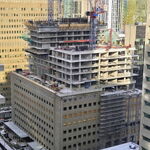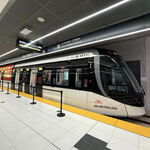Here is my updated version of the spreadsheet I
originally posted in 2015 to show the streetcar stops which I thought should be removed and result in a spacing of less than 400m. As far as I'm aware, the TTC has now removed 28 out of the 66 individual streetcar stops (14 out of 33 pairs) I thought should be removed.
View attachment 143335
Given that I made the list manually without any database, the information definitely not complete.
The weird case is Broadview & Danforth, where the northbound and southbound stops are in different wards, so one got removed but the other one didn't. According to the report, Councillor Fragedakis opposed the elimination of the southbound stop since it would require seniors in the apartment building on the northwest corner of the intersection to walk all the way to the subway station directly across the street on the northeast corner.
The Queen & Glen Manor changes were never on here because I thought they were just supposed to be relocations, not removals: Scarboro Beach moves a block east to Glen Manor, while MacLean moves a block east to Booth.





